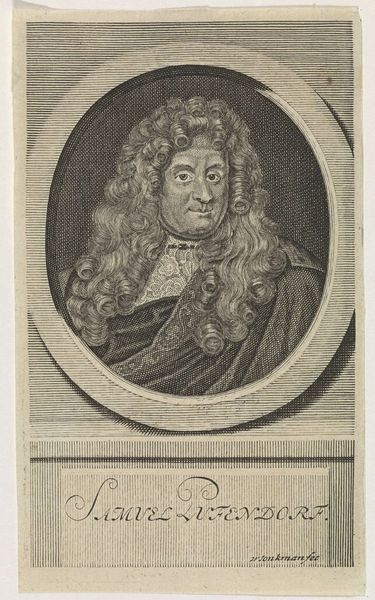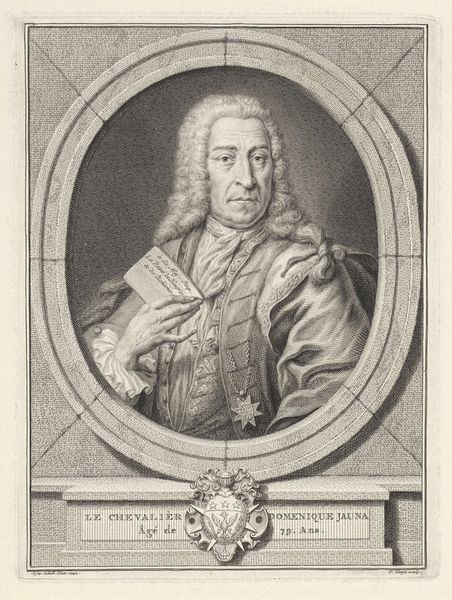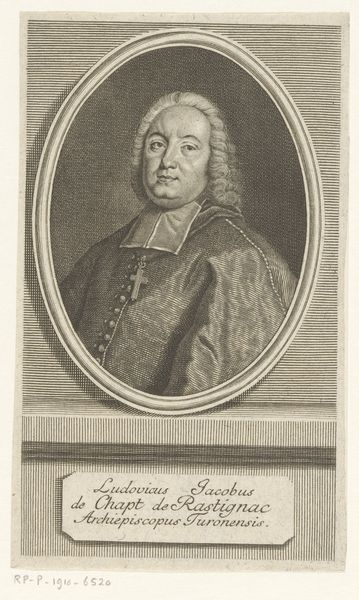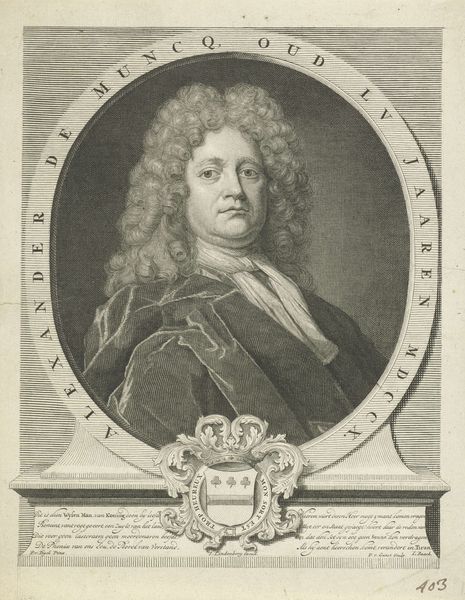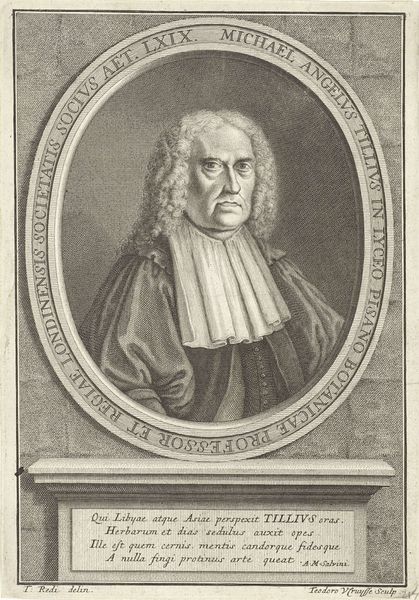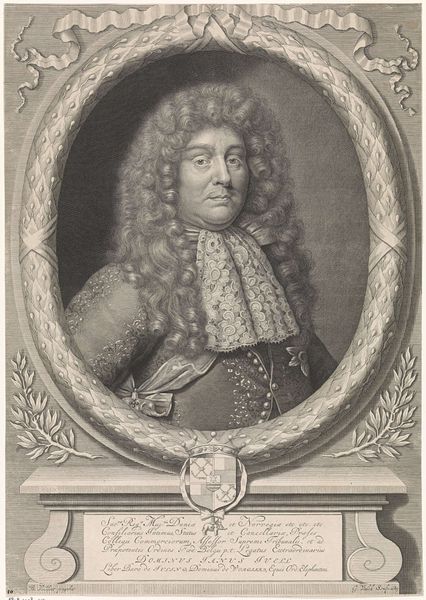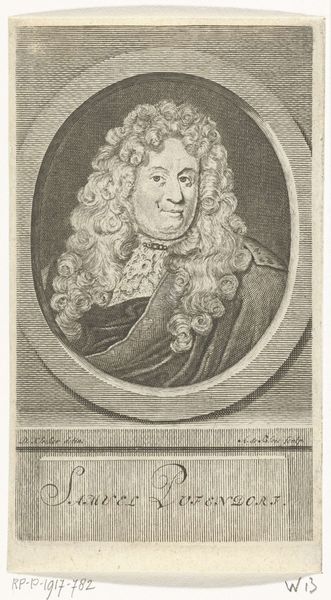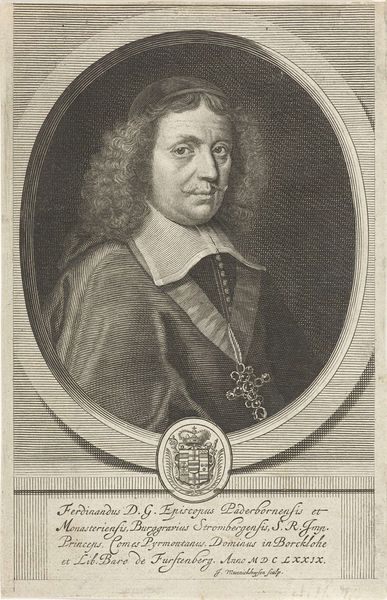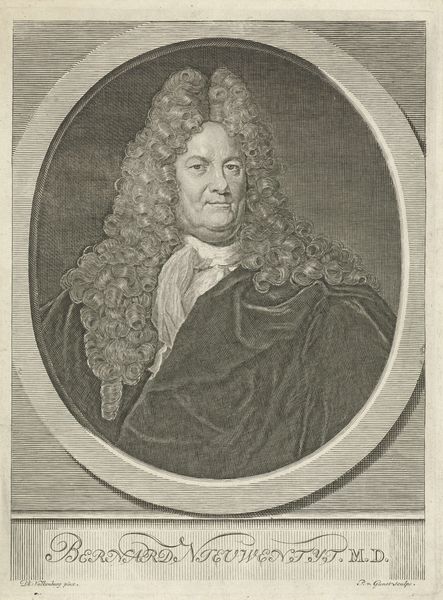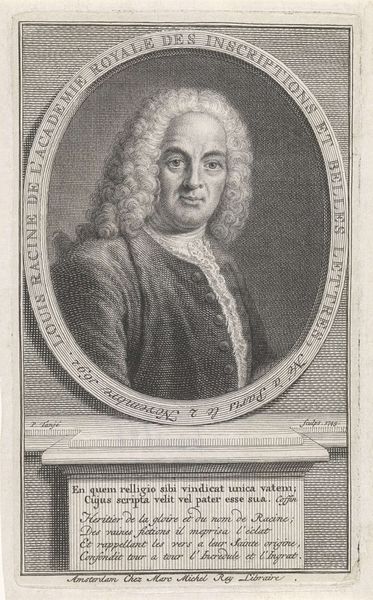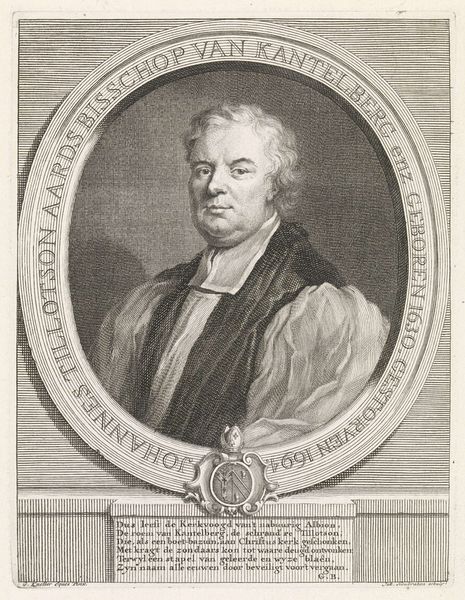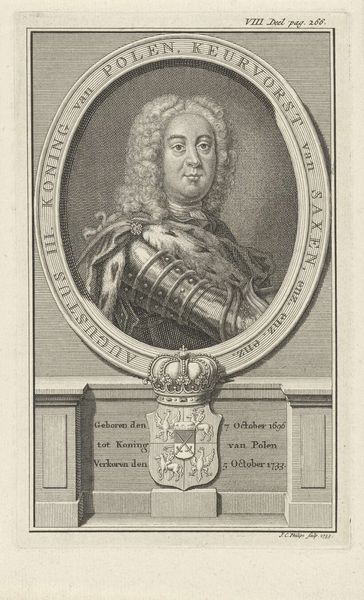
engraving
#
portrait
#
baroque
#
old engraving style
#
history-painting
#
engraving
Dimensions: height 140 mm, width 85 mm
Copyright: Rijks Museum: Open Domain
Curator: This engraving, created before 1752, presents us with a portrait of René Aubert de Vertot d'Auboeuf. Look closely at the textures achieved in the engraving technique. What strikes you immediately about it? Editor: There’s a real weightiness to the figure, isn’t there? A gravity. Even though it's an engraving, the use of light and shadow gives a sculptural feeling. I am drawn to the expression in his eyes, there is some defiance here. Curator: It’s intriguing how the piece frames notions of identity and representation in 18th-century French society. Vertot, as a historian, engaged directly with shaping narratives and his legacy, in an era of growing social upheaval. Does the portrait seem to amplify or downplay the societal power structures at play during that period? Editor: The symbolic language points directly to the status and character Vertot wished to project. His collar and medal obviously speak to his position, most likely ecclesiastical, which shaped social structures then. His elaborate wig? The wig is fascinating as it is symbolic to that particular time and class. It is a symbol for this man and an entire cultural era. It grounds him firmly within the visual rhetoric of power and authority. Curator: And how might that rhetoric contrast, or align with, modern views of history, knowledge and social justice? The engraving memorializes Vertot’s role but, today, we may ask about accessibility of historical discourse. Was he contributing to inclusive history, or cementing exclusive stories? What audiences did his works serve, and which were neglected? Editor: This brings to mind the long tradition of heraldry and its visual language as tools for defining identity and lineage, represented by the crest just beneath the portrait. It's a declaration of belonging to a certain heritage. You also have the scripted text towards the bottom, almost forming a monument and clearly reinforcing not only his works but what I assume were achievements. The entire design reads as an exercise in commemorating the power structures that defined the time, visually highlighting a particular elite identity and history. Curator: A compelling tension indeed—the aesthetic power versus potential societal exclusion. Considering these factors broadens our understanding of both the artwork and its complicated place within historical dialogues about who gets remembered, and how. Editor: The dialogue between past visual languages and present critical analyses helps us see even more complexity, it prompts important questions, that go beyond aesthetic considerations. Thank you.
Comments
No comments
Be the first to comment and join the conversation on the ultimate creative platform.

